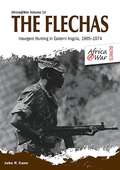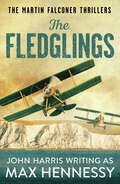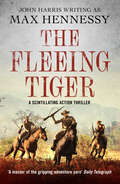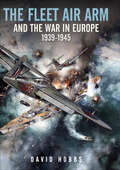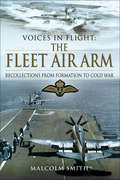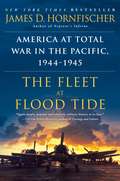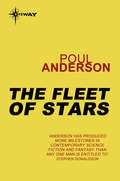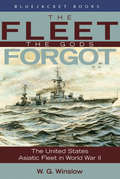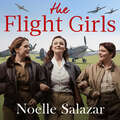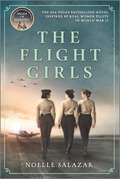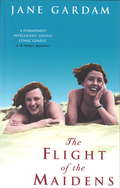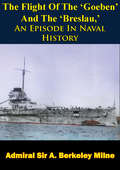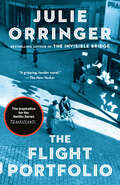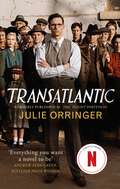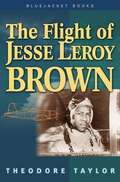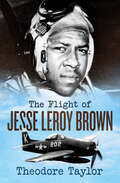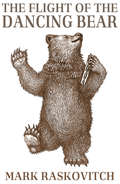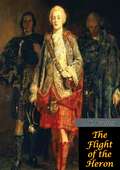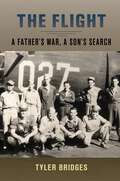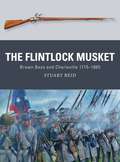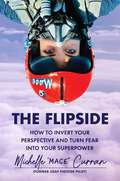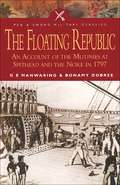- Table View
- List View
The Flechas: Insurgent Hunting in Eastern Angola, 1965–1974 (Africa@War #11)
by John Cann<p>In 1961, Portugal found itself fighting a war to retain its colonial possessions and preserve the remnants of its empire. It was almost completely unprepared to do so, and this was particularly evident in its ability to project power and to control the vast colonial spaces in Africa. Following the uprisings of March of 1961 in the north of Angola, Portugal poured troops into the colony as fast as its creaking logistic system would allow; however, these new arrivals were not competent and did not possess the skills needed to fight a counterinsurgency. While counterinsurgency by its nature requires substantial numbers of light infantry, the force must be trained in the craft of fighting a ‘small war’ to be effective. The majority of the arriving troops had no such indoctrination and had been readied at an accelerated pace. Even their uniforms were hastily crafted and not ideally suited to fighting in the bush. <p>In reoccupying the north and addressing the enemy threat, Portugal quickly realized that its most effective forces were those with special qualifications and advanced training. Unfortunately, there were only very small numbers of such elite forces. The maturing experiences of Portuguese and their consequent adjustments to fight a counterinsurgency led to development of specialized, tailored units to close the gaps in skills and knowledge between the insurgents and their forces. The most remarkable such force was the flechas, indigenous Bushmen who lived in eastern Angola with the capacity to live and fight in its difficult terrain aptly named ‘Lands at the End of the Earth’. Founded in 1966, they were active until the end of the war in 1974, and were so successful in their methods that the flecha template was copied in the other theaters of Guiné and Mozambique and later in the South African Border War. <p>The flechas were a force unique to the conflicts of southern Africa. A flecha could smell the enemy and his weapons and read the bush in ways that no others could do. He would sleep with one ear to the ground and the other to the atmosphere and would be awakened by an enemy walking a mile away. He could conceal himself in a minimum of cover and find food and water in impossible places. In short, he was vastly superior to the enemy in the environment of eastern Angola, and at the height of the campaign there (1966–1974) this small force accounted for 60 per cent of all enemy kills. This book is the story of how they came to be formed and organized, their initial teething difficulties, and their unqualified successes.</p>
The Fledglings (Martin Falconer Thrillers)
by Max HennessyMan against man. Face to face. One machine against another.It was shortly after the outbreak of the First World War. Martin Falconer and his friend, Frank, were anxious to ‘get into the scrap’ as soon as possible, their youth blinding them to the real danger of it all.Geoffrey, Martin’s elder brother, knew that it wasn’t a game. He had fought in the trenches, been wounded and had seen friends die.For Geoffrey the R.F.C. offered an opportunity to escape the mud and horror of the Front, while for Martin and Frank it was the chance to be in at the start of a totally different kind of fighting. They were to be pioneers.A scintillating, full-throttle thriller of the First World War, perfect for fans of W. E. Johns, Derek Robinson and Geoffrey Wellum.
The Fleeing Tiger (Boer War Duology)
by Max HennessyA huge prize awaits them, but only if they can escape.The Second Boer War is finally ending, and for three thieves there is the unexpected bonus of stealing an army payroll so large that they have to bury it outside a Free State town until the heat cools off.While they wait for an opportunity to return to their stolen bounty, the entire might of the army gives chase, giving rise to a riotous set of events.Based on a true story, John Harris’ adventure entertains and delights in a series of incredulous scenarios brought to glorious life against the backdrop of South Africa’s diamond mines.A gripping, nostalgic military heist thriller from master author Max Hennessy, perfect for fans of Jack Higgins, Hammond Innes and Alistair MacLean.
The Fleet Air Arm and the War in Europe, 1939–1945
by David HobbsA comprehensive history of the Royal Navy&’s naval aviation component&’s campaigns during World War II. For the first time, this book tells the story of how naval air operations evolved into a vital element of the Royal Navy&’s ability to fight a three-dimensional war against both the Kriegsmarine and Luftwaffe. An integral part of RN, the Fleet Air Arm was not a large organization, with only 406 pilots and 232 front-line aircraft available for operations in September 1939. Nevertheless, its impact far outweighed its numbers—it was an RN fighter that shot down the first enemy aircraft of the war, and an RN pilot was the first British fighter &“ace&” with 5 or more kills. The Fleet Air Arm&’s rollcall of achievements in northern waters went on to include the Norwegian Campaign, the crippling of Bismarck, the gallant sortie against Scharnhorst and Gneisenau as they passed through the Channel, air attacks on enemy E-boats in the narrow seas, air cover for the Russian convoys, air attacks that disabled Tirpitz, and strikes and minelaying operations against German shipping in the Norwegian littoral that continued until May 1945. By the end of the war in Europe the FAA had grown to 3243 pilots and 1336 aircraft. This book sets all these varied actions within their proper naval context and both technical and tactical aspects are explained with &“thumbnail&” descriptions of aircraft, their weapons and avionics. Cross reference with the Fleet Air Arm Roll of Honour has been made for the first time to put names to those aircrew killed in action wherever possible as a mark of respect for their determination against enemy forces on, above and below the sea surface which more often than not outnumbered them.The Fleet Air Arm and the War in Europe completes David Hobbs&’s much-praised six-volume series chronicling the operational history of British naval aviation from the earliest days to the present.Praise for The Fleet Air Arm and the War in Europe &“In this masterly addition to his series on the Fleet Air Arm at war, David Hobbs addresses naval air operations in the Atlantic, the North Sea, the Arctic, and the English Channel.&” —Professor Andrew Lambert, Warship 2023 &“With lots of action it rattles along and is a very good read.&” —The Armourer Magazine, May 2022
The Fleet Air Arm in the Second World War, Volume II, 1942-1943: The Fleet Air Arm in Transition – the Mediterranean, Battle of the Atlantic and the Indian Ocean (Navy Records Society Publications)
by Ben JonesThis is the second of three volumes covering the transformation of the Fleet Air Arm during the Second World War. As the subtitle of this volume ‘The Fleet Air Arm in Transition’ suggests, the years 1942-1943 marked a stepping stone between the small pre-war cadre operating from a small number of carriers to a naval air arm flying modern aircraft types from a large number of ships and as will be seen in Volume III capable of operating a number of Fleet Carriers in the Pacific Ocean for sustained periods. Whereas the majority of Volume I dealt with operations, this volume has a much more even balance covering planning and policy on the one hand and operations on the other. This reflects the crucial nature of this period as the development and expansion of the Fleet Air Arm gathered pace, whilst an increasingly diverse range of operations took place with those in the Mediterranean and the Atlantic reaching a climax. The reader will gain a clear appreciation of the growing importance, indeed primacy, of the aircraft carrier within the proposals for the future composition of Royal Navy’s surface fleet together with the nature of the Fleet Air Arm’s expansion programmes. Such expansion programmes were hindered by the constraints of aircraft production and the acquisition of sufficient shore facilities for the formation of new squadrons and the continued support of others. Some of the Fleet Air Arm’s most famous operations occurred during these years such as the escort of the ‘Pedestal’ convoy to Malta, air cover for the landings in North Africa, Sicily and at Salerno and the gallant, but ill-fated attack of 825 Squadron during the Channel Dash. The increasing role played by the Fleet Air Arm aircraft operating from Escort Carriers and Merchant Aircraft Carriers in the Battle of the Atlantic during 1943 is also apparent. The documents in this volume will bring to life the difficulties of operating aircraft at sea, the nature of air combat and the complexities involved in expanding an organisation such as the Fleet Air Arm under wartime conditions. As such it will enhance our understanding of the history of the Royal Navy’s air arm during the Second World War.
The Fleet Air Arm: Recollections from Formation to Cold War (Voices in Flight)
by Malcolm SmithThe author Malcolm Smith has been the Editor of Jabberwock, the bi-annual journal of the Fleet Air Arm Museum, for two years and has inherited the complete archive of editions dating back to the formation of SOFFAAM in 1979. In browsing through these, it quickly became apparent to him that they provided a unique archive of reminiscence of the men and (occasionally) women who served in, or have been associated with, the Fleet Air Arm since its formation in 1918. The Fleet Air Arm were the branch of the British Royal Navy responsible for the operation of naval aircraft, and its history is a varied one as these accounts attest.The Royal Navy, in common with the other armed services, expanded enormously during the Second World War, so anecdotes from this period naturally predominate. To illustrate the varied experiences of the contributors, these are grouped into War in the West and War in the East. Whether drawn from peace or war, however, what emerges from these pages is a particular spirit, peculiar to the Fleet Air Arm and reflecting its somewhat hybrid nature; a spirit derived from a high level of professional competence combined with a certain irreverence towards Authority.
The Fleet at Flood Tide: America at Total War in the Pacific, 1944-1945
by James D. Hornfischer<P>The extraordinary story of the World War II air, land, and sea campaign that brought the U.S. Navy to the apex of its strength and marked the rise of the United States as a global superpower <P>One of America's preeminent military historians, James D. Hornfischer has written his most expansive and ambitious book to date. Drawing on new primary sources and personal accounts by Americans and Japanese alike, here is a thrilling narrative of the climactic end stage of the Pacific War, focusing on the U.S. invasion of the Mariana Islands in June 1944 and the momentous events that it triggered. <P>With its thunderous assault into Japan's inner defensive perimeter, America crossed the threshold of total war. From the seaborne invasion of Saipan to the stunning aerial battles of the Great Marianas Turkey Shoot, to the largest banzai attack of the war and the strategic bombing effort that led to Hiroshima and Nagasaki, the Marianas became the fulcrum of the drive to compel Tokyo to surrender--with consequences that forever changed modern war. <P>These unprecedented operations saw the first large-scale use of Navy Underwater Demolition Teams; a revolution in the fleet's ability to sustain cross-hemispheric expeditionary warfare; the struggle of American troops facing not only a suicidal enemy garrison but desperate Japanese civilians; and the rise of the U.S. Navy as the greatest of grand fleets. From the Marianas, B-29 Superfortresses would finally unleash nuclear fire on an enemy resolved to fight to the end. <P>Hornfischer casts this clash of nations and cultures with cinematic scope and penetrating insight, focusing closely on the people who rose to the challenge under fire: Raymond Spruance, the brilliant, coolly calculating commander of the Fifth Fleet; Kelly Turner, whose amphibious forces delivered Marine General Holland "Howlin' Mad" Smith's troops to the beaches of Saipan and Tinian; Draper Kauffman, founder of the Navy unit that predated today's SEALs; Paul Tibbets, who created history's first atomic striking force and flew the Enola Gay to Hiroshima; and Japanese warriors and civilians who saw the specter of defeat as the ultimate test of the spirit. <P> From the seas of the Central Pacific to the shores of Japan itself, The Fleet at Flood Tide is a stirring and deeply humane account of World War II's world-changing finale. <P><b>A New York Times Bestseller</b>
The Fleet of Stars: Harvest of Stars Book 4 (HARVEST OF STARS)
by Poul AndersonThe Fleet of Stars sees the return of Anson Guthrie, Poul Anderson's iconoclastic hero from Harvest of Stars. Suspecting a conspiracy to suppress humankind's freedom, Guthrie begins a dangerous journey across the realm of comets...
The Fleet the Gods Forgot
by Walter G. WinslowThe heroic story of the U.S. Asiatic Fleet at the outbreak of World War II and their disastrous encounter with vastly superior Japanese forces.
The Flight Girls
by Noelle SalazarA USA TODAY BESTSELLERA PUBLISHERS WEEKLY BESTSELLERA WOMAN'S WORLD BEST NEW BOOK'I read well into the night, unable to stop. The book is unputdownable' Debbie Macomber, New York Times bestselling author Inspired by the real team of female pilots who trained World War II soldiers, a stunning debut novel about friendship and its power to make us soarAudrey Coltrane has always wanted to fly. It's why she implored her father to teach her at the little airfield back home. It's why she signed up to train pilots in Hawaii when the war in Europe began. And it's why she insists she is not interested in any romance, even with the disarming Lieutenant James Hart, who fast becomes a friend as dear as the women she flies with. Then one fateful day, she gets caught in the air over Pearl Harbour just as the bombs begin to fall, and suddenly, nowhere feels safe.Following the devastating attack, Audrey joins the Women's Airforce Service Pilots, hoping to make everything - and everyone - she's lost count for something. The friendships she forms reignite a spark of hope in the face of a war that moves closer to home every day. When James goes missing in action, those bonds help her summon the courage to cross the front lines and give her the faith that they will return home - together.'The Flight Girls captivated me from the first page and never let go . . . an epic love story, and a powerful tale of courage and sacrifice by the Women Airforce Service Pilots during WWII. A spectacular first novel' Sara Ackerman, author of Island of Sweet Pies and Soldiers and The Lieutenant's Nurse'Unforgettable and beautifully written . . . Salazar masterfully weaves a story of female strength and friendship, with an emotionally resonant epic love story' Jillian Cantor, author of The Lost Letter and In Another Time
The Flight Girls: A Novel
by Noelle SalazarA USA TODAY and PUBLISHERS WEEKLY bestseller—for fans of All the Light We Cannot See and The Tattooist of Auschwitz!&“I read well into the night, unable to stop. The book is unputdownable.&”—Debbie Macomber, #1 New York Times bestselling author&“Heart-breaking, validating, exciting.&”—Hypable&“Rich historical detail...this saga has it all.&”—Woman&’s WorldShining a light on a little-known piece of history The Flight Girls is a sweeping portrayal of women&’s fearlessness, love, and the power of friendship to make us soar.1941. Audrey Coltrane has always wanted to fly. It&’s why she implored her father to teach her at the little airfield back home in Texas. It&’s why she signed up to train military pilots in Hawaii when the war in Europe began. And it&’s why she insists she is not interested in any dream-derailing romantic involvements, even with the disarming Lieutenant James Hart, who fast becomes a friend as treasured as the women she flies with. Then one fateful day, she gets caught in the air over Pearl Harbor just as the bombs begin to fall, and suddenly, nowhere feels safe.To make everything she&’s lost count for something, Audrey joins the Women Airforce Service Pilots program. The bonds she forms with her fellow pilots reignite a spark of hope in the face war, and—when James goes missing in action—give Audrey the strength to cross the front lines and fight not only for her country, but for the love she holds so dear.Don't miss Noelle Salazar's next sweeping story, THE LIES WE LEAVE BEHIND, where a fearless nurse must leave love behind when duty calls her back to the front...More from Noelle Salazar: The Roaring Days of Zora Lily The Flight Girls
The Flight Girls: A Novel Inspired By Real Female Pilots During World War Ii
by Noelle SalazarA USA TODAY BESTSELLERA PUBLISHERS WEEKLY BESTSELLERA WOMAN'S WORLD BEST NEW BOOK'I read well into the night, unable to stop. The book is unputdownable' Debbie Macomber, New York Times bestselling author Inspired by the real team of female pilots who trained World War II soldiers, a stunning debut novel about friendship and its power to make us soarAudrey Coltrane has always wanted to fly. It's why she implored her father to teach her at the little airfield back home. It's why she signed up to train pilots in Hawaii when the war in Europe began. And it's why she insists she is not interested in any romance, even with the disarming Lieutenant James Hart, who fast becomes a friend as dear as the women she flies with. Then one fateful day, she gets caught in the air over Pearl Harbour just as the bombs begin to fall, and suddenly, nowhere feels safe.Following the devastating attack, Audrey joins the Women's Airforce Service Pilots, hoping to make everything - and everyone - she's lost count for something. The friendships she forms reignite a spark of hope in the face of a war that moves closer to home every day. When James goes missing in action, those bonds help her summon the courage to cross the front lines and give her the faith that they will return home - together.'The Flight Girls captivated me from the first page and never let go . . . an epic love story, and a powerful tale of courage and sacrifice by the Women Airforce Service Pilots during WWII. A spectacular first novel' Sara Ackerman, author of Island of Sweet Pies and Soldiers and The Lieutenant's Nurse'Unforgettable and beautifully written . . . Salazar masterfully weaves a story of female strength and friendship, with an emotionally resonant epic love story' Jillian Cantor, author of The Lost Letter and In Another Time
The Flight Of The Maidens
by Jane GardamThis delightful novel describes the post-war summer of 1946 - and follows the growing-up of three young women in the months between leaving school and taking up their scholarships at university. Una Vane, whose widowed mother runs a hairdressing salon in her front room ('Maison Vane Glory - Where Permanent Waves are Permanent'), goes bicycling with Ray, the boy who delivers the fish and milk. Hetty Fallowes struggles to become independent of her possessive, loving, tactless mother. And Lieselotte Klein, who had arrived in 1939 on a train from Hamburg, uncovers tragedy in the past and magic in the present.Rooted in the north of England, THE FLIGHT OF THE MAIDENS is peopled with extraordinary characters, who are evoked with all the humour, compassion and eye for detail that mark Jane Gardam as one of Britain's most gifted and original novelists.
The Flight Of The Maidens
by Jane GardamThis delightful novel describes the post-war summer of 1946 - and follows the growing-up of three young women in the months between leaving school and taking up their scholarships at university. Una Vane, whose widowed mother runs a hairdressing salon in her front room ('Maison Vane Glory - Where Permanent Waves are Permanent'), goes bicycling with Ray, the boy who delivers the fish and milk. Hetty Fallowes struggles to become independent of her possessive, loving, tactless mother. And Lieselotte Klein, who had arrived in 1939 on a train from Hamburg, uncovers tragedy in the past and magic in the present.Rooted in the north of England, THE FLIGHT OF THE MAIDENS is peopled with extraordinary characters, who are evoked with all the humour, compassion and eye for detail that mark Jane Gardam as one of Britain's most gifted and original novelists.
The Flight Of The ‘Goeben’ And The ‘Breslau,’ An Episode In Naval History
by Admiral Sir A. Berkeley MilneThe pursuit of Goeben and Breslau was a naval action that occurred in the Mediterranean Sea at the outbreak of the First World War when elements of the British Mediterranean Fleet attempted to intercept the German Mittelmeerdivision consisting of the battlecruiser SMS Goeben and the light cruiser SMS Breslau. The German ships evaded the British fleet and passed through the Dardanelles to reach Constantinople, where they were eventually handed over to the Ottoman Empire. Renamed Yavuz Sultan Selim, the former Goeben was ordered by its German captain to attack Russian positions, in doing so bringing the Ottoman Empire into the war on the side of the Central Powers.Though a bloodless "battle", the failure of the British pursuit had enormous political and military ramifications. In the short term it effectively ended the careers of the two British Admirals [one of whom is the author of this book] who had been in charge of the pursuit. Writing several years later, Winston Churchill - who had been First Lord of the Admiralty - expressed the opinion that by forcing Turkey into the war the Goeben had brought "more slaughter, more misery, and more ruin than has ever before been borne within the compass of a ship."
The Flight Portfolio: A novel (Vintage Contemporaries Ser.)
by Julie OrringerFrom the bestselling, award-winning author of The Invisible Bridge comes a gripping tale of forbidden love, high-stakes adventure, and unimaginable courage filled with "suspense and tragedy, unexpected twists and deliverance&” (The Seattle Times). • THE INSPIRATION FOR THE NETFLIX SERIES TRANSATLANTIC MARSEILLE, 1940. Varian Fry, a Harvard-educated journalist and editor, arrives in France. Recognizing the darkness descending over Europe, he and a group of like-minded New Yorkers formed the Emergency Rescue Committee, helping artists and writers escape from the Nazis and immigrate to the United States. Amid the chaos of World War II, and in defiance of restrictive U.S. immigration policies, Fry must procure false passports, secure visas, seek out escape routes through the Pyrenees and by sea, and make impossible decisions about who should be saved, all while under profound pressure—and in a state of irrevocable personal change. In this dazzling work of historical fiction—one that illuminates previously unexplored elements of Fry&’s story, and has, since its publication, brought us new insight into his life.
The Flight Portfolio: Based on a true story, utterly gripping and heartbreaking World War 2 historical fiction
by Julie Orringer1940, Nazi occupied France. In the middle of a devastating war, how many lives can you save?Varian Fry, a young American journalist, arrives in Marseille, shortly after the Germans have occupied the country. He is armed only with three thousand dollars and a list of writers, thinkers and artists he hopes to rescue - so long as the Nazis don't get to them first.With borders closing around him, Varian tries to track down those on his list - renowned artists like Marc Chagall, who cannot believe that he will ever be unsafe in the country he loves. He smuggles them over the Pyrenees mountains and across the sea hidden in boats, but everyday hundreds of ordinary Jewish refugees beg him for help. Does Varian have the right to choose who to save?At home in New York, making a list seemed simple, but in the middle of the worst war imaginable, he must do all he can to help. And as the Nazis begin to get word of Varian's secret operation, he must find dig deep and find the courage to rescue as many innocents as he can.Even though his own life may be in terrible danger. An incredibly compelling and heart-wrenching historical novel, inspired by true events, about the extraordinary courage and friendships forged during humanity's darkest hour. If you loved Schindler's List, All The Light We Cannot See or The Tattooist of Auschwitz, you'll adore The Flight Portfolio.What readers are saying about The Flight Portfolio:⭐⭐⭐⭐⭐ 'Oh - it's FABULOUS!... The best historical novel I've read in a long time.' Goodreads Reviewer⭐⭐⭐⭐⭐ 'I love this book so much I can barely breathe.' Goodreads Reviewer⭐⭐⭐⭐⭐ 'Such a wonderful novel!!... Please do yourself a favour and read it!!' Goodreads Reviewer⭐⭐⭐⭐⭐ 'Couldn't put this down. Beautiful writing and a riveting plot make this book an absolute page-turner!' Goodreads Reviewer⭐⭐⭐⭐⭐ 'I did not want this book to end... Riveting. I loved it.' Goodreads Reviewer⭐⭐⭐⭐⭐ 'An outstanding book for anyone who likes historical fiction, a gripping story, lyrical writing, or all three. It is one of those books that you never want to end.' Goodreads Reviewer⭐⭐⭐⭐⭐ 'I can't begin to believe that I will read another book this year that will even come close to reaching the heights of The Flight Portfolio.' Goodreads Reviewer
The Flight of Jesse Leroy Brown
by Theodore TaylorThis volume tells the story of Jesse Leroy Brown, who became the Navy's first black pilot. Taylor consulted Brown's training and flight records and logs and includes quotes from them, in addition to letters. He describes Brown's training, experiences in combat, personal life, and other details. Annotation ©2007 Book News, Inc., Portland, OR (booknews.com)
The Flight of Jesse Leroy Brown
by Theodore TaylorThis biography of America&’s first African American naval aviator is a &“compelling portrait of a quiet hero [and] the racial climate between 1926 and 1959&” (Booklist). &“In the late 1940s, when every aspiring black pilot had heard of the army&’s Tuskegee program, Jesse Leroy Brown set his sights on becoming a navy aviator. An outstanding student and top athlete, the 17-year-old&’s ambition was met with a combination of incredulity and resistance. Yet, at a time when Jim Crow laws were rampant, Brown managed to break the color barrier to become the first black U.S. Navy pilot. Taylor puts his considerable narrative skills to good use in tracing Brown&’s path from his youth in poverty-stricken Palmer&’s Crossing, Miss., to his eventual induction into the heady and dangerous world of carrier aviation. Taylor based much of his research on interviews with those who knew Brown and on personal letters from more than a half-century ago [and] doesn't skimp on the indignities Brown suffered. . . . An engaging and intimate glimpse of a young pioneer who desperately wanted to earn his aviator&’s wings.&” —Publishers Weekly &“More than a biography, this is a thrilling story of naval aviation and combat.&” —School Library Journal
The Flight of the Dancing Bear
by Mark RascovichThe Flight of the Dancing Bear, first published in 1959, is an exciting novel set in Soviet Russia. The story centers on Ur Kamak and Natacha, his performing bear, beloved by the Russian people, but who get into trouble when the aging bear bites a Red Army general. Rather than obey orders to kill the animal, Ur and the bear decide to flee to the safety of neighboring Finland. Also involved are a host of others including Kamak’s niece and the young British diplomat who loves her, the members of a collective that produces illegal vodka, a Russian sharpshooter who hates the present regime, the inmates of a pioneer colony, a lady engineer and her train, and two foreign correspondents. Before Kamak, his niece, Natacha and their odd entourage Finland, they are beset with adventures ranging from the tragic to the hilarious. Combining laughter with tears, The Flight of the Dancing Bear is a fascinating look at life in the former Soviet Union.
The Flight of the Heron (The Jacobite Trilogy #1)
by D. K. BrosterSet during the 1745 Jacobite uprising under Bonnie Prince Charlie, D. K. Broster's The Flight of the Heron is the first of the Jacobite Trilogy.At the centre of the story are the intersecting fortunes of two men, who at first glance seem almost complete opposites: Ewen Cameron, a young Highland laird in the service of the Prince, is dashing, sincere, and idealistic, while Major Keith Windham, a professional soldier in the opposing English army, is cynical, world-weary, and profoundly lonely. When a second-sighted Highlander tells Ewen that the flight of a heron will lead to five meetings with an Englishman who is fated both to do him a great service and to cause him great grief, Ewen refuses to believe it.But as Bonnie Prince Charlie's ill-fated campaign winds to its bitter end, the prophecy is proven true--and through many dangers and trials, Ewen and Keith find that they have one thing indisputably in common: both of them are willing to sacrifice everything for honour's sake...Twice adapted for BBC Radio (1944 and 1959) and made into a TV serial by Scottish Television (1968) and the BBC (1976), this is the unmissable best-seller that first catapulted author D. K. Broster to fame!
The Flight: A Father’s War, a Son’s Search
by Tyler BridgesBoth history and memoir, The Flight tells the story of Richard W. “Dick” Bridges’s heroic service in World War II. Bridges survived a German attack on his plane, the Fascinatin’ Witch, by parachuting out of the exploding B-24. He escaped detection in Austria, became the first American prisoner of war in Hungary, was sent to Yugoslavia, escaped from his POW camp there, was sheltered by the Partisans one step ahead of the Germans, and was finally airlifted to safety in Italy by the British.Bridges’s story, which seems almost too astonishing to be true, went untold until after his death in 2003, when his son, Tyler Bridges, pieced it together. The younger Bridges’s odyssey in search of his father’s wartime experiences connected him with the families of other crew members aboard the Fascinatin’ Witch and led him to retrace his father’s footsteps through Austria, Hungary, and the former Yugoslavia.With his findings, Bridges has woven a story not only about World War II and the bravery of this unique group of soldiers, but also about fathers and sons, what can get lost in the gulf between generations, and how patience and understanding can bridge that gap.
The Flintlock Musket
by Steve Noon Stuart ReidThe flintlock or firelock musket is one of the truly iconic weapons in history: first used on the battlefields of the Thirty Years' War and the English Civil War, it was carried by both sides at Bunker Hill, Waterloo and the Alamo, and can truly be said to have dominated warfare for more than 150 years, until the advent of cartridge ammunition and breechloading weapons in the 1840s and 1850s and were still being widely used as late as the American Civil War in the 1860s.During the 18th century flintlocks tended to follow one of two basic patterns: from 1722 the British .75-calibre model, the 'Brown Bess', offered better man-stopping qualities and influenced the Prussians and others, while from 1717 the lighter, handier but more sturdy French .69-calibre Charleville served as a pattern first for the other Bourbon kingdoms such as Spain, then the American Springfield family of weapons, and finally for just about everybody else in Europe during the Napoleonic era.Featuring specially commissioned full-colour artwork, this engaging study examines the role played by the flintlock in close-order combat on European and other battlefields, employing first-hand accounts to show how tactical doctrines were successfully developed to overcome the weapon's inherent limitations; it also explores the use of the flintlock musket by individuals in irregular warfare, chiefly in North America. These two threads are combined in an analysis of the weapon's lasting impact; notwithstanding its frequently negative portrayal in popular films and otherwise respectable histories, it was extremely effective and the first truly universal soldier's weapon.
The Flipside: How to Invert Your Perspective and Turn Fear into Your Superpower
by Michelle "MACE" CurranFormer Thunderbird Lead Solo Michelle "MACE" Curran provides a blueprint for converting your fear into a strength based on the hard-earned lessons she learned in the cockpit and beyond. Michelle Curran can fly an F-16 fighter jet upside down, but she&’s afraid of spiders. And tight spaces. During high altitude chamber training, she wondered if her fellow airmen—and they were all men—could tell she was panicking under her oxygen mask. Yet she flew sorties in Afghanistan and served as Lead Solo for the Thunderbirds, performing in aerial showcases nationwide—often upside down. All this, while grappling with what was, to her, an even bigger opponent: imposter syndrome. In time, she learned how to turn fear into strength and self-doubt into confidence. Most of all, she learned how to make uncomfortable choices by flipping her perspective, like her jet, upside down. In The Flipside, Michelle &“MACE&” Curran addresses how fear tends to force us back into our comfort zones and onto autopilot. She shares lessons she learned from high-stakes missions and life-defining moments, helping readers unlock their resilience to face life&’s challenges with courage—and ultimately, rise above.
The Floating Republic: An Account of the Mutinies at Spithead and the Nore in 1797 (Pen & Sword Military Classics)
by Bonamy Dobree G.E. ManwaringThe naval mutiny of 1797 is the most astonishing recorded in British history; by its management rather than by its results. Though it shook the country, it was largely ordered with rigid discipline, a respect for officers and an unswerving loyalty to the King. Moreover, it was so rationally grounded that it not only achieved its immediate end, the betterment of the sailor's lot, but also began a new and lasting epoch in naval administration.
